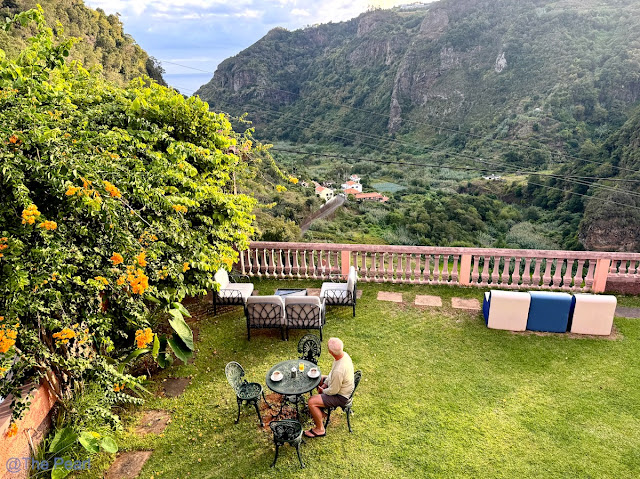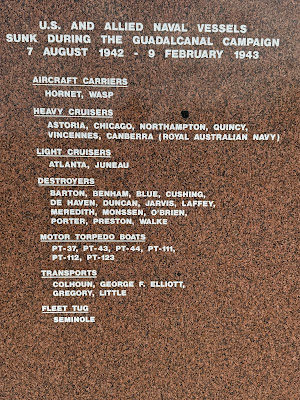September 20, 2024
At Sea between Vanuatu and Fiji
We had the normal range of lectures and conversations with the expedition team, which included nudibranches (soft bodied gastropod molluscs which shed their shells after the larval stage), seed dispersal in the Pacific and basic climatology. Patrick and Miriam also attended a sunset Caviar and Champagne reception on the stern with ship’s officers and expedition team members for Diamond and Diamond Elite Seabourn Club members. There are about 25 of us on board. This gave us another opportunity to meet new people on board.
September 21, 2024
Landfall in Fiji occurred about 1000 local time when Seabourn Pursuit approached the reef, escorted by spotted dolphins cavorting around the bulbous bow. The ship entered Navulu Passage reef entrance and proceeded some 28 nm inside the barrier reef surrounding the island of Viti Levu to the berth at Lautoka, Fiji.
 |
| The approach to Vita Levu – Lautoka |
Fiji gained independence from Great Britain in October 1970, but the British influence is still present including right hand drive vehicles. Fiji has become a popular tourist destination, with tourism supplanting sugar cane as a major economic driver. There were many yachts anchored all over the lagoon. Small cruise ships were also at anchor.
The east side of the island has a number of five star resorts at Denarau Island, just a short drive from Nadi, just an hour drive from Lautoka.
Seabourn had an included tour of a traditional Fijian village, with dances and kava, a walk through an orchid preserve and a stop for shopping in Nadi, the largest town.
At the Fijian village, long pants were the norm, since Fijian tradition requires knees to be covered, especially for women, hats were removed and we went to a large tent with chairs to watch the traditional dancing outside the church in the village. Since missionaries arrived in Fiji, Christianity has become a dominant faith among the Fijian people, although all faiths are welcome. This dominance has resulted in stores being closed on Sundays, and closed early on Saturday. The dances and rituals we observed are a blend of traditional Fijian and modern day dances and music.
 |
| Presenting the kava to the “chiefs” |
 |
| Women’s Dance in front of church |
 |
| Ceremonial Chief’s House |
 |
| The warrior dance |
The dancing was preceded by a traditional kava ceremony where two male guests were selected to represent the “tribe” visiting the village. After the ceremony, Patrick also tasted the Fiji Kava, much weaker than Vanuatu, and not nearly as disgusting in taste or texture.
The village has also preserved the traditional thatched roof house of the chief, now used only for ceremonial purposes. The chiefs house is modern and many Fijian houses are equipped with air conditioning, TV’s, washing machines, etc. Most of the power comes from hydroelectric, although outlying villages depend on solar power.
The second stop was at the “Garden of the Sleeping Giant”, a nature preserve with many orchids, as well as other tropical plants. The preserve was started by Raymond Burr, of Perry Mason and Ironsides fame. Raymond Burr was well respected and loved by the Fijian people and he funded many scholarships for local people in addition to starting the preserve. The “Sleeping Giant” refers to the outlines on the hills above that resemble the face and bodies of two sleeping people.
 |
| Orchid |
 |
| Blue Orchid |
 |
| Jade Vine |
 |
| Red Ginger |
 |
| Anthurium |
The final stop of the tour was in the town of Nadi, at one of the few stores open after 4pm. The stores had a wide variety of tourist items, none of which we needed. On the drive we passed Hindu Temples, Moslem Mosques and many churches of all denominations, although the largest denomination is Methodist.
Returning to the ship after dark, all four buses arrived at the same time to be greeted by a massed ship’s company, with a red carpet, champagne, waving flags and “Dancing Queen” played and sung as we walked between the crew members on either side of the red carpet and boarded Seabourn Pursuit. The ship had a late departure, casting off the mooring lines at 2200 for the 343 nm passage to our next port, Vulaga Island, Fiji. We have now traveled 3750 nm since departing Guam.

































































































